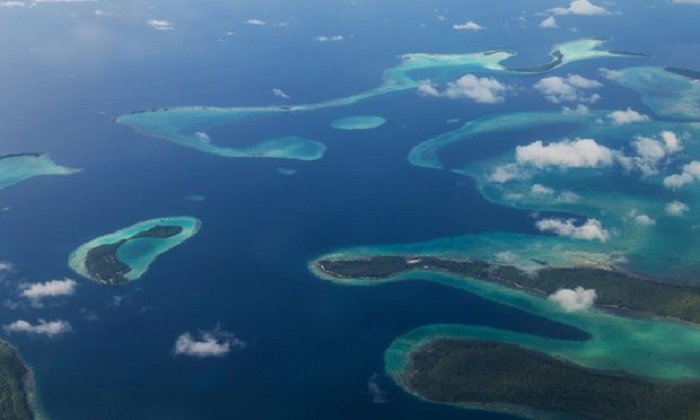The same team found other “dark spots” that were not faring well - some of which included remote and relatively undisturbed locations.
In one of the largest studies of its kind, researchers conducted more than 6,000 reef surveys in 46 countries around the world.
They identified 15 locations where far more fish were colonising coral reefs than had been expected. Bright spots were typically found in the Pacific Ocean in places such as the Solomon Islands, parts of Indonesia, Papua New Guinea, and the island republic of Kiribati.
The report said: “Bright spots are characterised by strong sociocultural institutions such as customary taboos and marine tenure, high levels of local engagement in management, high dependence on marine resources, and beneficial environmental conditions such as deep-water refuges.”
Lead scientist Professor Josh Cinner, from the ARC Centre of Excellence for Coral Reef Studies at James Cook University in Australia, said: “Given the widespread depletion of coral reef fisheries globally, we were really excited to find these bright spots that were doing much better than we anticipated.
“These ‘bright spots’ are reefs with more fish than expected based on their exposure to pressures like human population, poverty, and unfavourable environmental conditions.
“To be clear, bright spots are not necessarily pristine reefs, but rather reefs that have more fish than they should, given the pressures they face.
“We wanted to know why these reefs could ‘punch above their weight’ so to speak, and whether there are lessons we can learn about how to avoid the degradation often associated with overfishing.”
The researchers, who included a British team from the University of Lancaster, pointed out that the bright spots were not immune to human activity but had certain features in common.
These included strong local involvement in their management, local ownership rights, and traditional management practices.
A total of 35 “dark spots” were identified where fish stocks were in worse shape than expected.
They were globally distributed and found in every major ocean basin, and also had some defining characteristics. Generally they were subject to intensive netting activity and allowed easy access to freezers where fish could be stockpiled.
Cinner added: “We believe that the bright spots offer hope and some solutions that can be applied more broadly across the world’s coral reefs.
“Specifically, investments that foster local involvement and provide people with ownership rights can allow people to develop creative solutions that help defy expectations of reef fisheries depletion.
“Conversely, dark spots may highlight development or management pathways to avoid.”
A total of 39 scientists from 34 universities and conservation groups took part in the research, published in the journal Nature.
More about:
















































